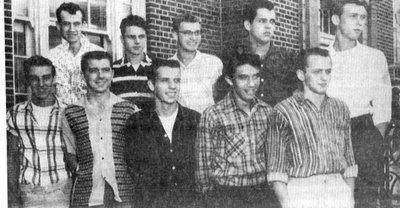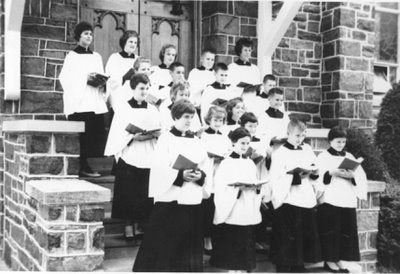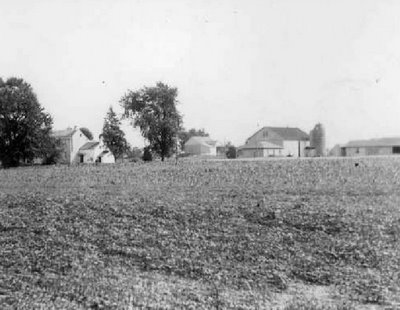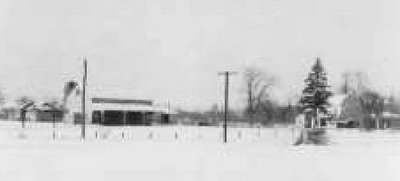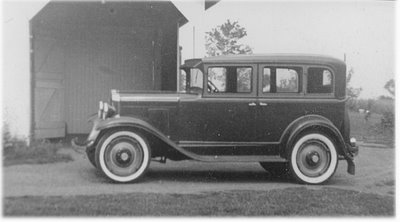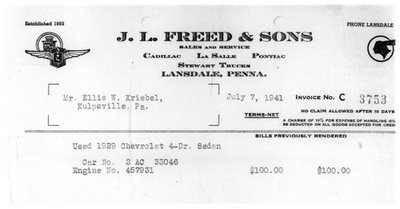Here is a local take on the 1934 Morro Castle shipwreck tragedy that appeared in our sister paper, The Mercury in Pottstown.
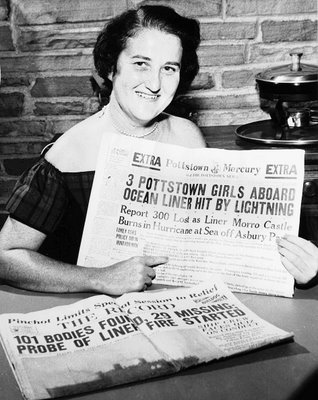
By Michael T. Snyder, Special to The Mercury
When Mercury readers unfolded their morning papers on Sept. 8, 1934, a headline in two-inch type screamed the news: "3 POTTSTOWN GIRLS ABOARD OCEAN LINER HIT BY LIGHTNING."
A secondary headline told more. "Report 300 Lost as Liner Morro Castle Burns in Hurricane at Sea off Asbury Park."
News stories about the destruction of the ship dominated the paper's front page for the next four days as The Mercury chronicled one the greatest disasters in American maritime history.
The Morro Castle was built for the Ward Line by the Newport News Shipbuilding and Drydock Co. at a cost of $4.35 million. Constructed between July 1929 and March 1930, it was the ultimate in luxury, speed and safety. At 508 feet in length and 70 feet in width, the liner's five decks accommodated a maximum of 530 passengers and its 220-man crew.
Its 16 suites were posh and the 142 cabins were just slightly off that mark. The liner's formal rooms were - to the middle class people that made up the vast percentage of its passengers - designed and furnished with jaw-dropping elegance.
A Renaissance theme dominated one room, Louis XVI another. Rich wood paneling was used throughout, and ceilings overhead were painted with elaborate murals.
Sparkling gold fixtures cast light in a dining room furnished with plush upholstered chairs and linen-draped tables. Food and beverages - abundant and of the highest quality - were served by waiters in starched white coats.
Young, attractive entertainment directors supervised shipboard activities, and an orchestra provided music for dancing.
Because of the competition among cruise ships sailing from New York City, the ticket price for all this luxury in 1934 was as little as $65 per person. But Ward Line's owners could afford to offer low rates. The Morro Castle made most of its profit by carrying cargo and from a federal contract that paid $750,000 for transporting mail to and from Havana, Cuba.
The mail contract brought with it the need for speed, and the ship's architect made sure the Morro Castle could fly, equipping it with two electric engines that could move its bulk through the choppy waters of the Atlantic at 21 knots per hour - almost 24 miles per hour.
In the wake of the Titanic sinking in 1912 and other maritime disasters, the Morro Castle had many safety features, among them a fire detecting system - which unfortunately did not safeguard the ship's public rooms. The ship carried 12 lifeboats and 12 balsa floats with a combined capacity of 816 people. In fact, the Morro Castle was so well-equipped that Marine Engineering magazine considered it the "safest (ship) afloat."
Luxury liner cruises toward Cuba
At 4 p.m. on Saturday, Sept. 1, the Morro Castle pulled away from its dock on the East River at the foot of Wall Street, carrying 259 passengers and a 231-man crew bound for Havana.
Among the passengers were James and Madeline Drummond, who were married that morning in Philadelphia. The newlyweds took a train to New York in time to board their honeymoon ship.
When she walked to the altar that morning, Mrs. Drummond was 28-year-old Madeline Claire Finn, a Philadelphia resident born and raised in Pottstown. She graduated from St. Aloysius Commercial School, probably in 1921-22, and by 1930 was living in Philadelphia where she worked as a stenographer.
Pottstown residents Agnes and Ruth Prince and Evelyn Henricks were also aboard the Morro Castle that afternoon. Twenty-eight-year-old Agnes, the society editor of The Pottstown Mercury, and her 22-year-old sister, Ruth, were daughters of the late Harry Prince and his widow, Lena Schlossberg Prince.
Their friend Evelyn was the 22-year-old daughter of Willis Henricks, the owner of the Henricks Pretzel Co. Her father paid for her trip as a bribe to entice her to stop smoking.
The Morro Castle sailed smoothly south along the eastern coast of the United States, rounded the tip of the Florida peninsula and docked at Havana early on the morning of Sept. 4.
At 5:15 the next evening, the Morro Castle, with 59 additional passengers who boarded in Havana, began the return trip to New York. The northern leg of the journey went according to plan until the evening of Sept. 7. It was then that the ship's captain, Robert R. Willmott, was found dead in his bathroom. Command of the vessel passed to William Warms, the Morro Castle's chief officer.
Festive mood turns to fear
Though Capt. Willmott's death prompted cancellation of the formal dinner scheduled for that evening, many small, impromptu parties got under way as passengers set out to enjoy their last night on board the ship.
By 2 a.m., most of the revelers had gone back to their cabins to get some rest before the ship docked. About 2:45, on the ship's B deck, a passenger reported a strong smell of smoke to a crew member. The odor was tracked to a small storage locker in the writing room on the port (left) side of the ship. The crewman opened the door to searing heat and a burst of blue-white flames.
In the chain of events that rapidly unfolded, it seems as if fate had stacked the deck against the Morro Castle's passengers.
The first reports that reached the acting captain were misleading, and it was assumed the fire was small. General quarters was not sounded; the crew was not mobilized. There was no coordinated effort to warn passengers. Many of the ship's fire hydrants were capped, making them non-functioning.
To make matters worse, the Morro Castle was moving at near full speed into the teeth of a nor'easter with winds blowing at 20 mph. The wind "frenzied the flames," Agnes Prince wrote, and it spread rapidly.
Within 15 minutes of its discovery, the fire had spread across the width of B deck, blocking access to the stairway that led to A deck where the lifeboats were positioned.
Panic grips weary passengers
It was about 3 a.m. when Agnes and Ruth Prince went to bed in their cabin on D deck. Shortly after retiring, the sisters - Agnes wrote the day after the fire - "smelled smoke." Alarmed, she called the operator and was told there was a fire, but it wasn't known if it was serious.
The Princes donned their coats and life jackets, left their room and "ran through the smoke to the stairway in the forepart of the ship with the idea of reaching the lifeboats." However, when they reached the staircase "huge flames" that were "already leaping high" blocked their way.
Moving back along the corridor, the sisters were still able to climb to A deck by the aft stairway. But they were forced to retreat again because A deck was "in flames and many of the lifeboats burning."
Chaos reigned in the corridors of the decks below. There was no organized effort to aid the passengers. They sensed they were trapped, and the fire's heat and thick, black smoke spread fear and panic. Prince saw people "on their knees praying" and "mothers with little ones at home, hysterical with the thought of leaving them forever."
Eventually, the fire drove most of the passengers and some of the crew to the promenade decks at the rear of the ship. Their backs were literally to the rail and the flames kept coming. With power lines incinerated, the ship was in total darkness. Men and women who danced and laughed just an hour before choked on the heavy smoke, and the metal decks were hot beneath their feet.
Local women leap into raging sea
The storm-driven rain pounded the hapless passengers, and 20 or 30 feet below the railing the wind whipped the Atlantic into 15- to 20-foot waves.
By 4 a.m. the crew had lowered the few lifeboats that escaped the flames and, carrying just a handful of passengers, rowed away from the ship. Stranded and left to survive on their own, many, including the Prince sisters, decided to jump overboard.
"We knew there was no chance for us on board," Agnes later wrote.
Ruth was the first over the side and Agnes followed with the "feeling of going down, down, down" and the "dread of wondering what in the world was going to happen."
The Princes made their leap from D deck, which was about 20 feet above the waterline. If the ship was at the crest of a wave, the sisters would have fallen another 15 feet or so, traveling about 30 miles an hour when they hit the water.
Some passengers were killed by the very lifejackets that should have saved them. Having never been shown the proper way to put on the lifejackets, they put them on backwards, with the heavy collars in the front. The force of their entry into the waves drove the collars into their jaws, snapped back their heads and broke their necks.
Eventually there were hundreds of people in the water. They escaped the flames but a long ordeal lay ahead of them.
The water temperature was a chilling 70 degrees, too cold for a long immersion. Large waves made many people seasick, and it was difficult for the survivors to breathe without swallowing salt water. After hours in the water, one passenger, a man whose lungs were filled with sea water, gasped to his 18-year-old- daughter, "I give up, I give up," and then died.
Rescue efforts hampered by stormA distress signal was sent by the ship's crew, but not immediately, so it wasn't until about 4:30 a.m. that the first rescue vessel reached the scene. The height of the waves made the rescue effort treacherous, and it was difficult to spot people in the water.
Evelyn Henricks also went over the side of the fiery Morro Castle and joined a small group of bobbing figures. After they had been in the water three hours, Evelyn spotted a "Coast Guard boat heading toward our bedraggled group of people."
The boat picked up Henricks and the survivors with her and took them to a freighter that was assisting with the rescue. When the ship docked in Brooklyn she was met by her sister-in-law's father, who drove her to his cottage at Cedar Lake, N.J. From there, Henricks' brother drove her back to Pottstown.
Agnes and Ruth Prince were in the water for more than six hours before they were rescued. At first the sisters were separated, and Agnes was "too dazed by the horror of it all to call for Ruthie." Eventually she heard Ruth calling her name, but they remained separated until near dawn.
Agnes wrote, "Others began joining us and we all kept together."
When the sky lightened, the weary, cold survivors could see several boats picking up Morro Castle passengers, but the height of the waves made it difficult to attract the attention of rescuers. They were nearly exhausted when they were picked up by the Paramount, a fishing boat captained by John Bogan of Brielle, N.J.
The story of newlyweds Joseph and Madeline Drummond also had a happy ending. The Drummonds were admitted to St. Vincent's Hospital in New York City, suffering from shock, exposure and exhaustion. But according to The Mercury they soon recovered, and from their adjoining hospital beds "laughed as they discussed their harrowing experience."
Madeline's mother, Margaret Finn, took the news of the rescue very calmly, commenting to the paper, "I felt all the time a Finn would not go beneath the water."
Mystery haunts aftermath of tragedy
The women from Pottstown survived. Agnes and Ruth Prince and Evelyn Henricks eventually married, raised families, and lived long lives. Madeline Drummond presumably returned to Philadelphia with her new husband, but research revealed nothing of her later years.
For 134 passengers on the Morro Castle - men, women and children - life ended on Sept. 8, 1934. The tragedy sparked an FBI investigation, and several of the ship's officers and the Ward Line's president were sentenced to prison. Their convictions were later overturned on appeal.
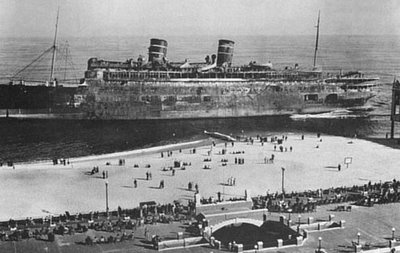
At least one question remains unanswered. How did the fire start?
Officially, it was deemed an accident, but many at the time believed it was arson. FBI documents made public in the 1980s now leave little doubt that the fire was deliberately set.
Some historians theorize the Ward Line orchestrated the tragedy to collect insurance money and hired George Rogers, the ship's chief radio operator, to start the blaze. Rogers was capable of such a deed. A psychopath with a criminal record, he was later sent to prison for trying to blow up a Bayonne, N.J. police officer. After his release, he murdered two of his neighbors and was sentenced to life in prison.
Other historians believe the fire was set by Cuban terrorists in retaliation for the Morro Castle's providing refuge for men the Cuban revolutionaries were trying to capture.
The Morro Castle tragedy has captured the interest of many researchers and authors, so a wealth of material is available. The most recent book, "When the Dancing Stopped" by Brian Hicks, is an excellent account. Online, an interesting site is Gare Maritime; clicking "articles" will lead to two fine studies by James Kalafus.
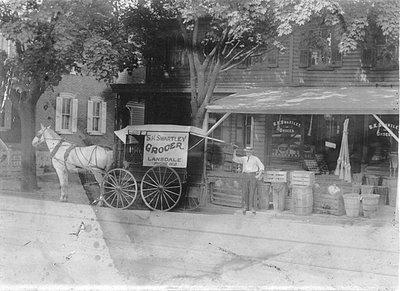
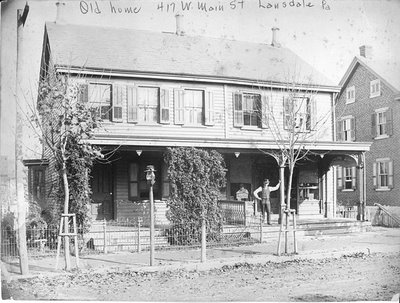
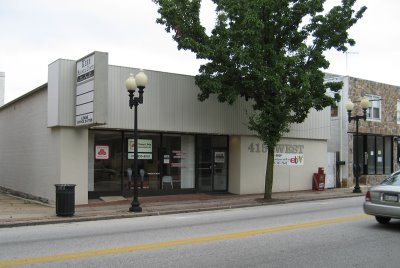
 RSS
RSS
